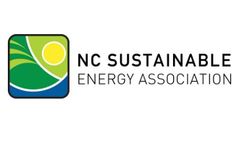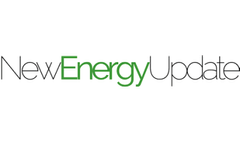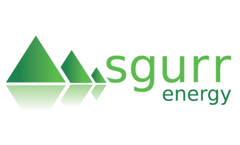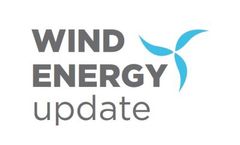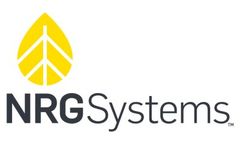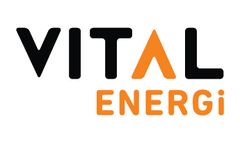Offshore Wind Foundation Development Articles & Analysis
15 articles found
The environmental and economic benefits of clean energy have been well documented. However, not everyone experiences these benefits equally. As discussed in our July blog post, racial discrepancies have an impact on who is more likely to receive the benefits of clean energy, but geographic location also plays a role in determining who benefits. The five most populated counties in North Carolina ...
A new digital twin project led by floating wind developer Principle Power will use advanced wave behavior analysis to improve load calculations critical to long-term design efficiency, project partners told New Energy Update. Last month, U.S. group Principle Power announced it would lead a consortium of public and private groups to develop the world's first digital twin software for floating ...
Annual solar O&M costs set to hit $9 billion by 2024: WoodMac Annual global solar operations and maintenance (O&M) costs will double from around $4.5 billion in 2019 to $9.4 billion in 2024, as installed PV capacity grows, Wood Mackenzie Power and Renewables said in a new report. By 2024, inverter replacement costs alone will hit around $1.2 billion, representing around 13% of O&M ...
A month earlier, the Norwegian government launched public consultations into opening three sea areas for offshore wind development. The sea areas include Utsira Nord, a 1,010 sq km area located 22 km off the coast of Haugesund which has an average water depth of 267 m, too deep for fixed-bottom projects. ...
The U.S. offshore sector must create regional East Coast supply chains and public-private initiatives that accelerate training and port investments to ensure long-term competitiveness, leading developers told the U.S. Offshore Wind 2019 Conference. New Jersey's decision last week to select Orsted’s giant 1.1 GW Ocean Wind project for its first large-scale facility highlights the rapid ...
Less than a decade ago, offshore wind energy and solar PV were similarly priced energy sources. Unsubsidized installed costs for both exceeded $5 per watt, or more than double that for land-based wind. Despite their cost, both technologies were seen as the best hopes for supplying urban centers with green power, especially in the BOSNYWASH (Boston-New York-Washington, DC) corridor of the eastern ...
How procurement strategies, manufacturing costs and new technology stack up against development risk in Offshore Wind Projects. Offshore wind is changing, and it is changing for the better. ...
The existing fleet of turbine and foundation installation vessels is well suited to serve the European offshore wind market in the short and mid-term but it will not be sufficient to support installation demand after 2020, Michael Guldbrandtsen, senior consultant at MAKE Consulting, told Wind Energy Update. ...
To select the right offshore wind site, estimate the future energy output of a wind farm, and determine the best layout for the turbines, project developers must conduct wind resource assessment (WRA) campaigns on site. This is a critical phase of the successful development of wind farms. WRA campaigns on terrestrial sites have traditionally been performed using meteorological towers equipped ...
As offshore wind technology develops ever more gigantic machines further from shore into deeper waters, it is common wisdom that new foundation technologies are needed. But are they? Monopile, and some jacket foundations, still dominate the offshore wind market in commercial ...
It overtook another U.K. project, the 500-megawatt Greater Gabbard wind farm, which was finished in 2012. In all, the United Kingdom has some 12,000 megawatts of offshore wind capacity under construction or in earlier development stages. ...
“In the offshore wind power industry, logistics planning is the dominant driver to avoiding costly mistakes,” highlighted Jim Lanard, President, Offshore Wind Development Coalition. The technologies needed to set up offshore wind farms are available in the US, and what is needed the most is a focus on logistics that would make them happen efficiently, he added. A speaker at the ...
Wind power is the world’s leading source of renewable electricity, excluding hydropower, with 238,000 megawatts of capacity installed at the start of 2012. Thus far, almost all of this wind power has been tapped on land; worldwide just 4,600 megawatts of offshore wind farms were operating as of mid-2012. Offshore wind capacity is growing quickly, however, expanding nearly six-fold ...
The two governments agree to encourage renewable energy, CCS, oil and gas. The UK and Norway yesterday agreed to increase the levels of co-operation between the two countries as they attempt to re-establish the North Sea as one of the world's leading energy hubs. The two governments recognize the "growing potential for North Sea marine renewable energy projects to bring new investment and green ...
In Japan, the cumulative capacity of wind turbine generation systems on land has increased steadily in recent years. To install a large number of wind turbines has inherent problems such as shortage of suitable land, and inadequate infrastructure such as power cables and roads. The necessity for development of offshore wind turbine generation systems has been recognised based on the above ...

